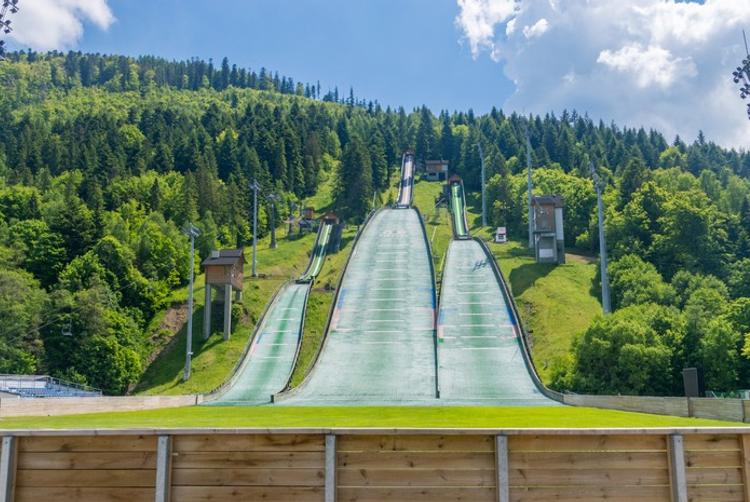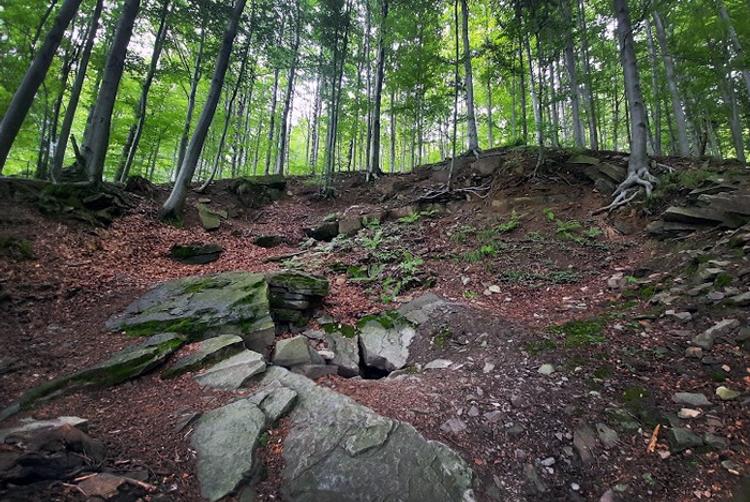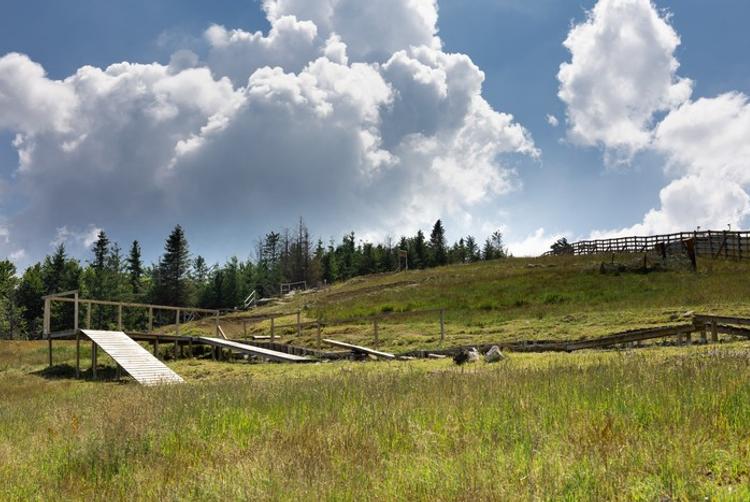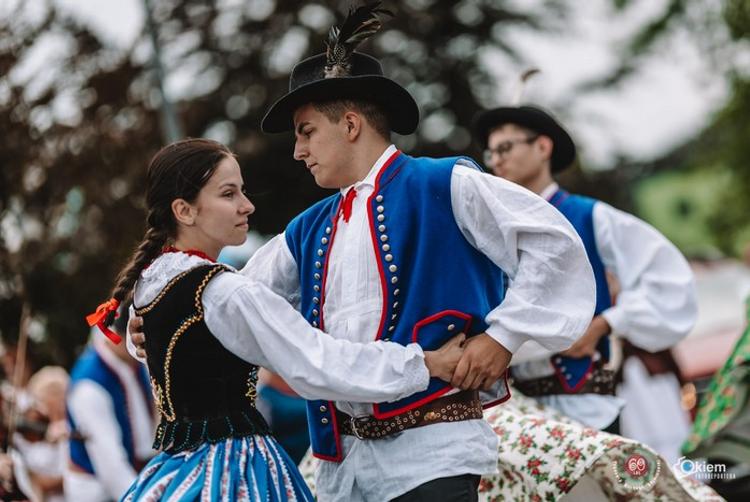Content Blocks
Skalite Ski Jump
The history of the ski jump dates back to 1937. That's when the first official competition was held in Szczyrk. The ski jump at that time allowed for jumps of up to 40 meters. The current unofficial record belongs to Krzysztof Leja and stands at 116 meters. The official record was set by Maciej Kot at 106 meters.
Annually, the following events are held at the ski jump:
- FIS Cup: World Cup competitions of the International Ski Federation.
- Nationwide Youth Olympics: a unique event that brings together young, talented athletes.
- Lotos Cup: a prestigious tournament in which both domestic and international ski jumpers participate.
In addition to participating in exciting competitions, it is also possible to tour the ski jump and admire the panorama of Szczyrk from the viewing point located directly on the ski jump.

Malinowska Rock
Malinowska Rock is the pride and symbol of the Silesian Beskids. It is located just below the summit of the mountain, which bears the same name, in the main ridge of the Barania Góra range.
There is a legend associated with the rock that it is a millstone thrown by the devil himself. Geologists claim that it is rather an exposure of conglomerates of the Gondulian layers.
You can reach Malinowska Rock by many routes. We recommend driving to the Salmopol Pass, from where a relatively easy red trail takes about 1.5 hours, passing also the small but very interesting Malinowska Cave, an additional attraction of the trip.

Skrzyczne
Skrzyczne is the highest peak of the Silesian Beskids (1257 meters above sea level). Due to its high antenna mast, it is easy to identify in the landscape. From the viewing platform at the top, one can admire the beautiful panorama of the surroundings of Szczyrk and the Żywiec Lake, and in good weather, even see the Tatra Mountains many kilometers away.
In addition to hikers and those who reach the top by cable car, the mountain is also favored by skiers and snowboarders, who in winter use several downhill routes of varying difficulty.

Ice Cave
The Ice Cave is located on the southeastern slope of Hyrcy Mountain, in a former local quarry.
The name of the cave comes from the numerous ice formations that persist on the walls of the cave throughout the year. Exploring the cave does not require special equipment, a good flashlight is enough. This cave is also known as the Partisan Cave - during World War II, it served as a shelter for local underground independence groups.Annually, the following events are held at the ski jump:

Sanctuary of the Mother of God Queen of Poland
The Church on Górka in Szczyrk is an extraordinary place of worship, associated, according to beliefs, with apparitions of the Virgin Mary. The building, towering high above the town, is located right by the picturesque blue trail leading towards Klimczok.
The Sanctuary of the Mother of God Queen of Poland, as the Salesian church is officially named, attracts tourists and pilgrims who want to pray and visit the image of the Virgin Mary, painted according to the accounts of apparitions that took place at the end of the 19th century.

Bicycle Trails
Szczyrk to rowerowy raj. Funkcjonująca, także latem, kolej gondolowa na Halę Skrzyczeńską oraz krzesełkowa na Zbójnicką Kopę, umożliwiły prężny rozwój okolicy w kierunku turystyki rowerowej.
Wśród szczytów i długich grzbietów Beskidu Śląskiego znajdziecie dziś szereg dobrze oznakowanych, widokowych tras rowerowych. Są one zróżnicowane pod względem trudności, tak by każdy miłośnik jednośladu mógł znaleźć coś dla siebie.

Enduro Bike Trail
The Szczyrk Enduro Trails complex was created with a passion for extreme sports. These specially profiled tracks for bikes, built away from traditional hiking trails, provide safety and incredible fun from riding. The center offers 6 routes of varying difficulty. Their total length is 16 km, allowing for long hours of exciting fun.

Week of Beskid Culture
The Week of Beskid Culture is the largest folk festival in Poland. At the turn of July and August, the Beskids are filled with singing, music, and folk dance. Both Polish and foreign folklore are hosted in: Wisła, Szczyrk, Żywiec, Maków Podhalański, Oświęcim, as well as Ujsoły, Jabłonków, and Istebna.
During the festival, thousands of performers from dozens of Polish groups and several foreign groups take the stage, plus about a hundred bands, singing groups, and soloists. It's worth seeing!

3 reasons to stay with us
Halo facilities are located in popular mountain and seaside resorts. Soon,
Halo will also appear in the centers of the most beautiful Polish cities.
Halo loves being with people - taking care of their good experiences, preparing pleasant surprises,
initiating inspiring meetings, and celebrating everyday hospitality.
Halo draws its colors from the richness of Polish nature: the green of forests, the red of flowery meadows, the gold of fields, and the blue of the sea.
We interpret them in our own way: in the color of wildflowers, you will find accents of coral reefs, and in the pine green - the subdued color of basil.
Special offers

Free cancellation


